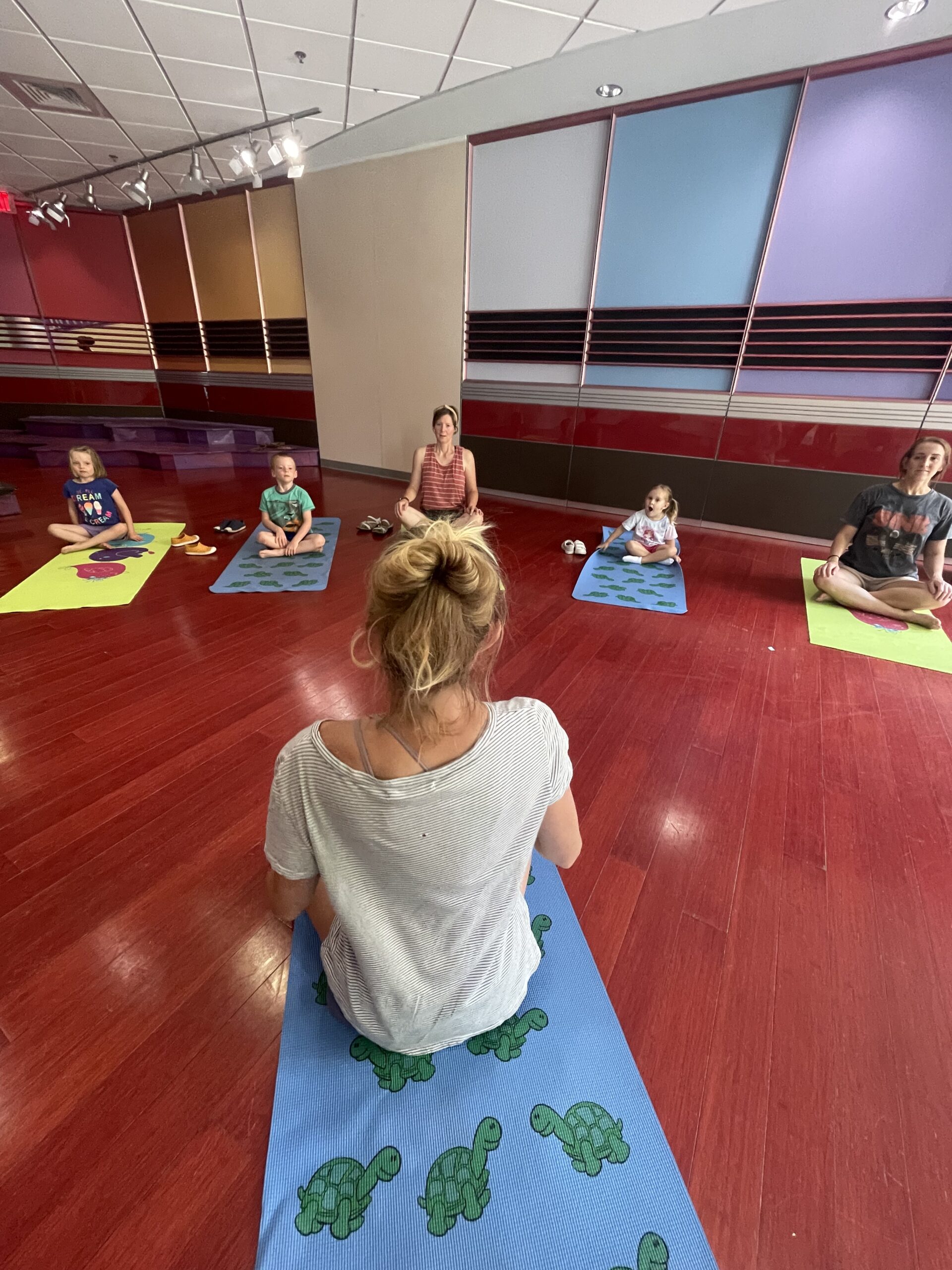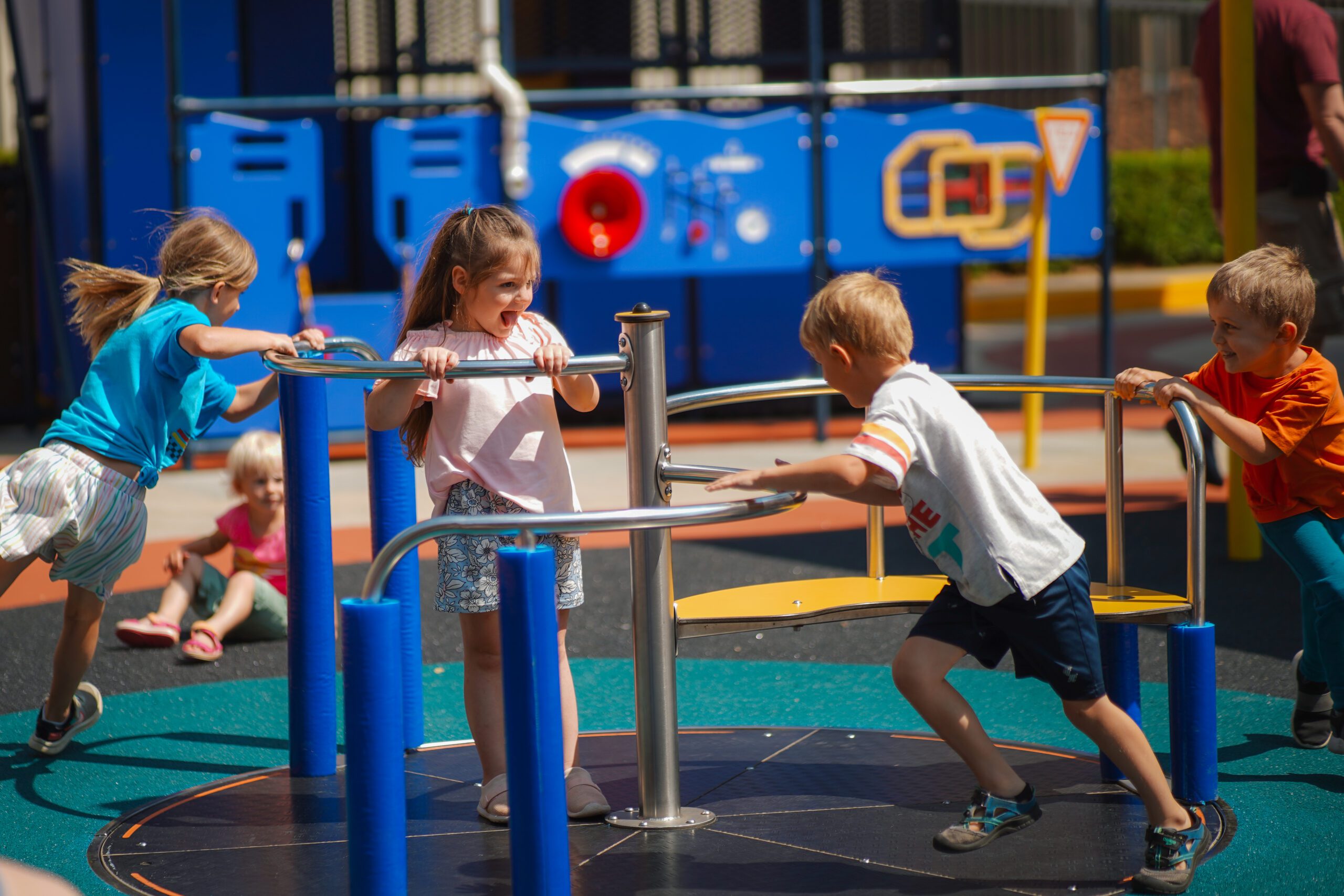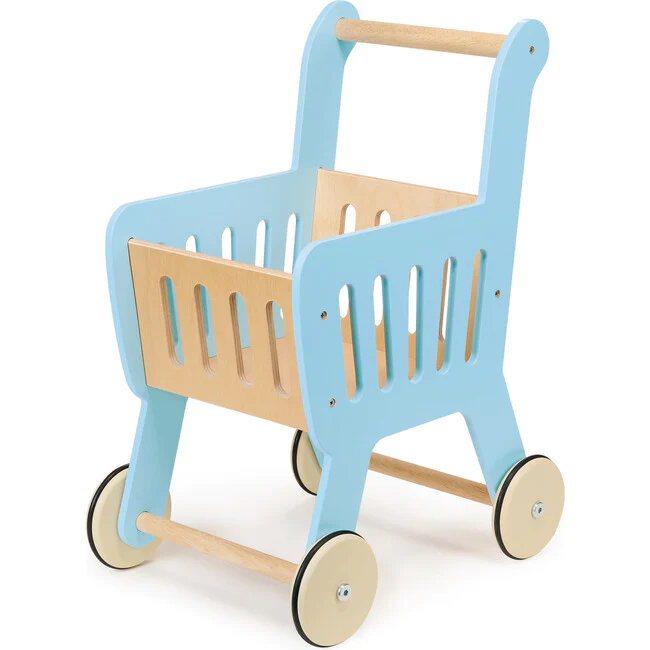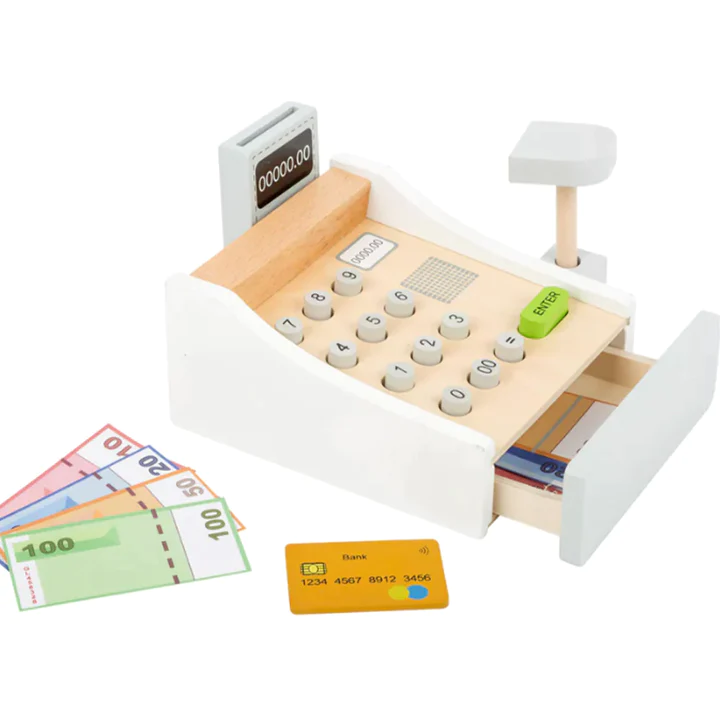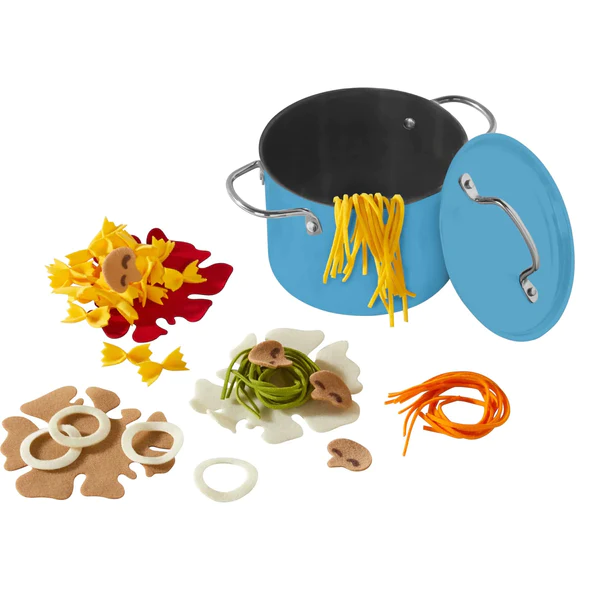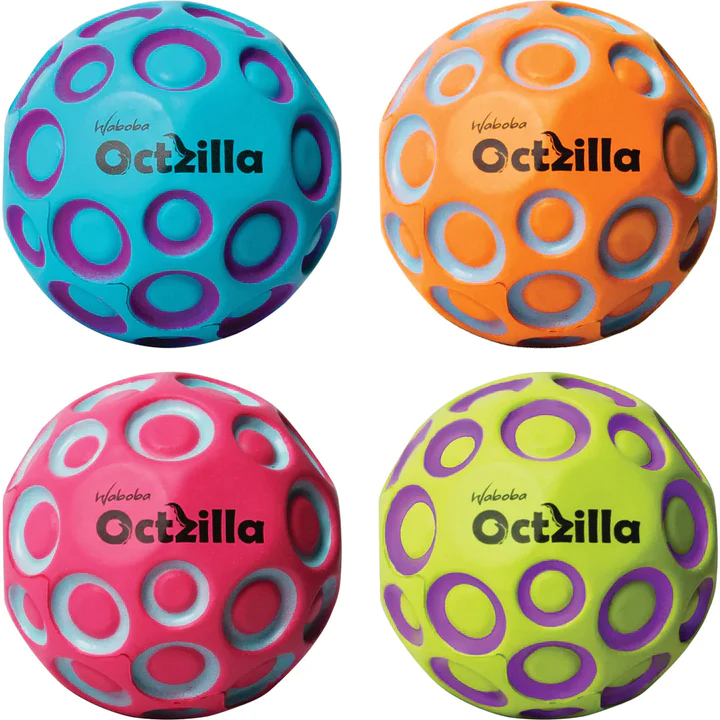Is learning through play possible? Not only is learning through play possible, it’s critical to your child’s development.
At The Children’s Museum of the Upstate, we believe wholeheartedly in the profound benefits of learning through play at different ages. As a new or seasoned parent, we will help you explore the various types of play, and discover how, as parents, you can be the architects of your child’s vibrant educational journey.
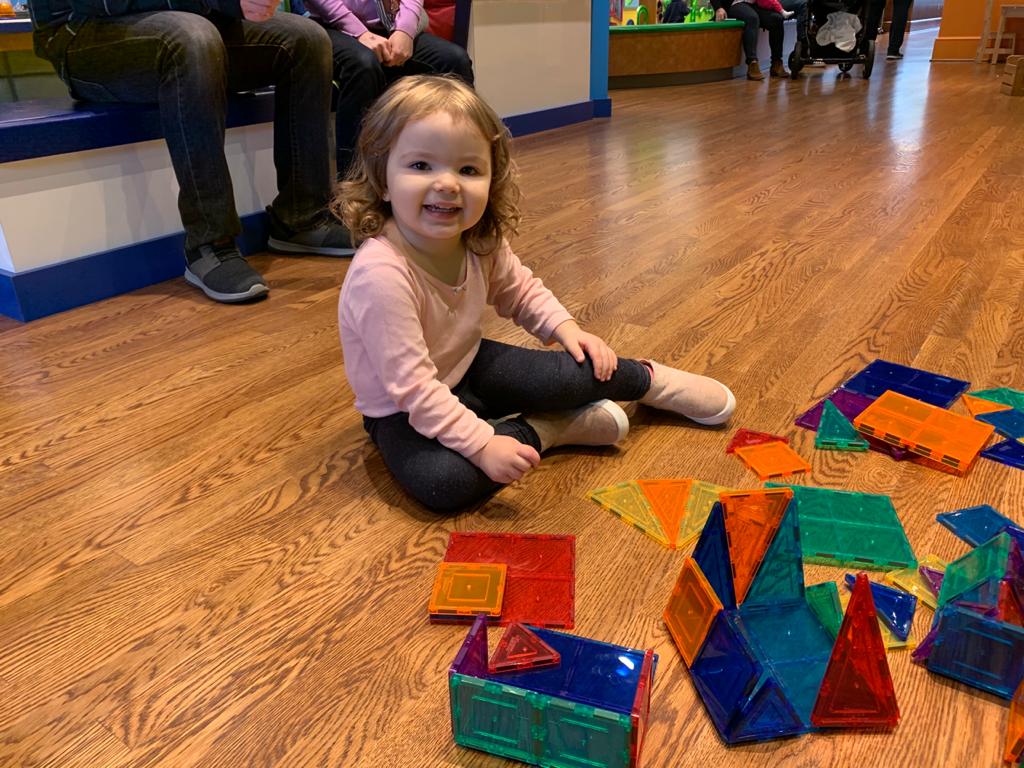

The Foundation: Importance of Play in Childhood Development
Laurel Bongiorno, PhD, dean of the Division of Education and Human Studies at Champlain College, believes that learning and play should not look like separate activities. Bongiorno’s research sets the stage for our exploration, highlighting that play is the linchpin of childhood development. It’s not just about having fun; it’s the dynamic process through which children hone cognitive skills, physical abilities, social adeptness, and literacy prowess. The Children’s Museum of the Upstate recognizes this transformative power, turning every visit into a golden opportunity for growth and learning.
Learning Through Play at Different Ages
Pre-K (Ages 3-5)
In these formative years, play is not just an activity; it’s the very fabric of learning. Katherine Green, an expert from The Chicago School of Professional Psychology, underscores that preschool play sets the stage for a lifetime of academic success. For preschool-aged children, this often looks like imaginative play and building fine-motor skills through a variety of activities.
- Pretend Play with Sensory Bins: Set up a sensory bin with materials like rice, dried beans, or colored pasta. Add in small toys or objects like plastic animals, cars, or kitchen utensils. Encourage your child to explore and create imaginative scenarios using the items in the bin. This activity not only engages their imagination but also develops their fine-motor skills as they manipulate the objects.
- Artistic Creations with Playdough: Provide your child with playdough in various colors and let their creativity soar. Encourage them to sculpt animals, shapes, or even their favorite foods. They can also use tools like rolling pins, cookie cutters, and plastic knives to further enhance their fine-motor skills while having fun creating their masterpieces.
- Building with Blocks: Offer a variety of building blocks such as wooden blocks, LEGO Duplo, or Mega Bloks. Encourage your child to construct towers, houses, or whatever their imagination desires. As they stack and manipulate the blocks, they not only engage in imaginative play but also refine their fine-motor skills and spatial awareness.
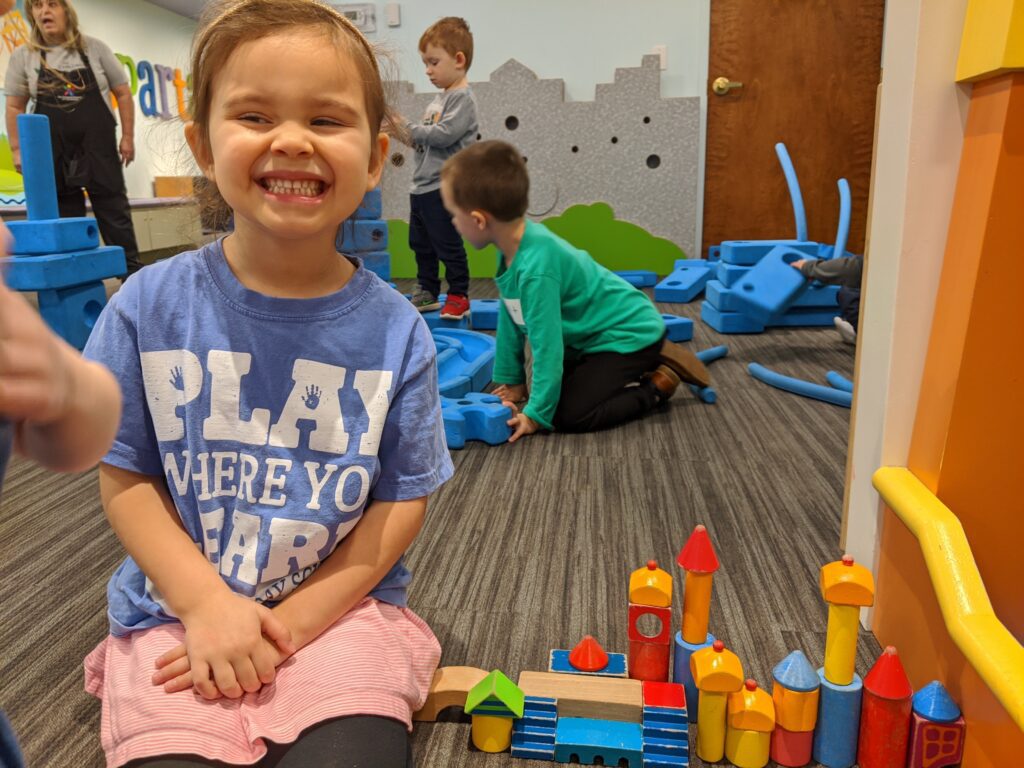

The Children’s Museum of the Upstate mirrors this philosophy, providing immersive environments where children can direct their play, sparking creativity and laying the foundation for future educational endeavors. At TCMU-Greenville, there are several designated “toddler zones” perfect for this age group including Grandma Betty’s Farm, Toddler Lily Pond and Construction Zone. The entire Spartanburg location is geared towards children six and younger. Which means every exhibit contains learning opportunities for this age group.
Kindergarten (Ages 5-6)
Transitioning into kindergarten doesn’t mean the end of play; rather, it evolves into a powerful tool for negotiation, problem-solving, and cooperation. Ruslan Slutsky, a professor at The University of Toledo, advocates for making play more playful, ensuring that learning remains a joyful, engaging experience.
- Collaborative Storytelling: Encourage your child to engage in collaborative storytelling with family members at home. Sit together in a circle and start a story with a simple sentence like “Once upon a time, there was a magical forest.” Then, take turns adding to the story, allowing each person to contribute a sentence or two. This activity not only fosters imagination but also promotes negotiation as children learn to take turns, listen to others’ ideas, and build upon them to create a cohesive narrative.
- DIY Obstacle Course: Transform your living room or backyard into an obstacle course using household items like pillows, chairs, hula hoops, and cardboard boxes. Encourage your child to help design the course, deciding on the layout and challenges together. As they navigate through the course, they’ll encounter problem-solving opportunities as they figure out how to overcome obstacles and reach the finish line. Additionally, working together to create the course promotes cooperation and teamwork among family members.
- Family Game Night: Dedicate a special evening each week to family game night, where everyone can come together to play board games, card games, or simple indoor activities like charades or Pictionary. Allow your child to take turns choosing the game, giving them a sense of autonomy and decision-making power. Through gameplay, children practice negotiation skills, learning to follow rules, take turns, and resolve conflicts peacefully—all while having a blast with their loved ones.
The museum seamlessly integrates structured play programs, making the learning journey not only academic but also a delightful adventure. TCMU is an especially great resource for children who may not have siblings to interact with, or who are homeschooled. It offers access to potential playmates at similar developmental stages.
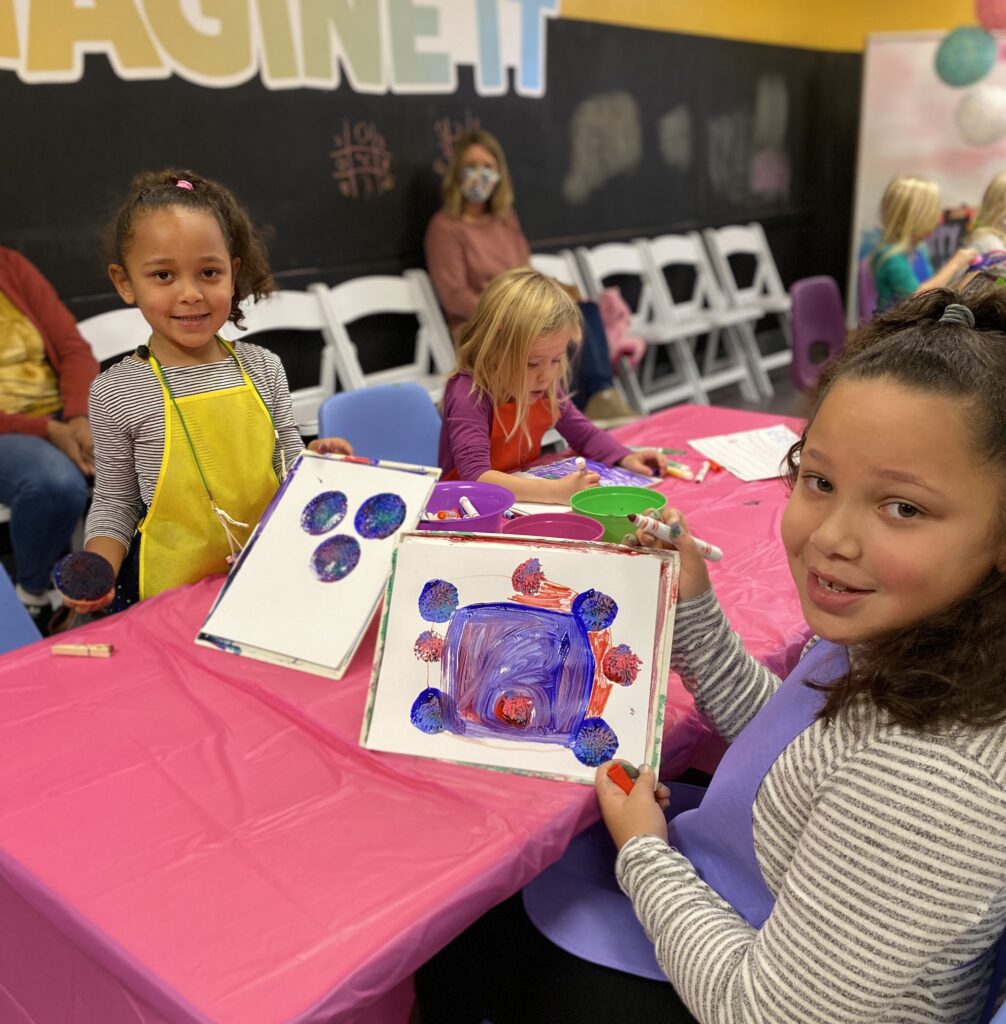

Elementary Age (Ages 7-12)
As a senior instructional designer, Elizabeth DeWitt’s insights remind us that even as children progress into the early grades, play remains a dynamic force for learning. Parents can maintain involvement by offering supplies and opportunities for these experiences.
- Playing with Clay: Playing with playdough or clay builds dexterity and is tactile learning. Playdough also helps children learn to hold a pencil because they can practice manipulating objects with their hands.
- Creating Colors: Another multisensory strategy is for children to create colors with water and food coloring. This teaches children about primary and secondary colors.
- Craft Time: Tap into your child’s creativity with arts and crafts projects that allow them to express themselves through various mediums. Provide supplies like paper, markers, crayons, paints, glue, scissors, and recyclable materials, and let their imagination take flight. Encourage them to create artwork, craft projects, or DIY gifts for family and friends. You can also explore themed craft activities such as making seasonal decorations or crafting costumes for imaginative play.
The museum, aligning with this philosophy, provides connected learning experiences using multisensory strategies. It becomes a space where children actively engage, explore, and use their imaginations, reinforcing the idea that learning and play are inseparable companions. Older children especially love TCMU-Greenville’s free programming including Exploration Station, Open Art and Random Acts of Science. All these programs provide multisensory strategies for learning new skills and information.
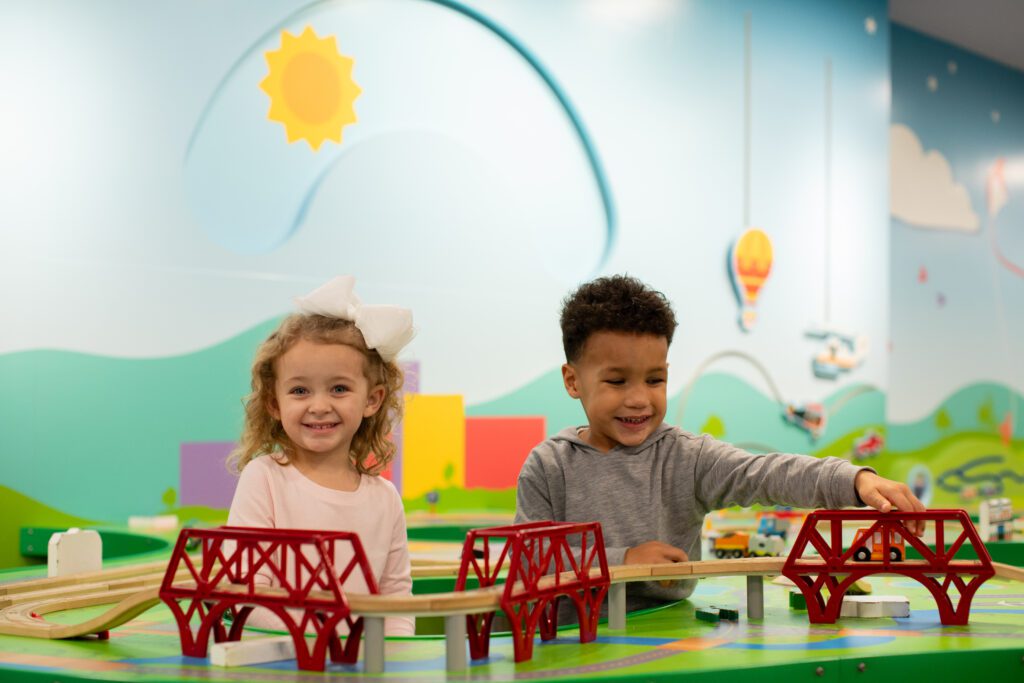

The Types of Play
Play is a multifaceted phenomenon, presenting itself in various forms, each contributing uniquely to a child’s development:
1. Playtime Pals: The Children’s Museum of the Upstate encourages social interactions, creating an environment where children can build connections and learn together. Friendships forged in play teach teamwork, sharing, and the art of companionship, skills that extend far beyond childhood.
2. Imagination Station: Pretend play is a powerhouse for creativity and problem-solving. The museum provides spaces where children can let their imaginations soar, creating worlds of their own and honing essential skills for future challenges and opportunities. Both locations also offer TCMU Tots, programming that creates space for imaginative play around themes including doctor’s office, space exploration, car wash and more.
3. Build-a-thon: Building activities refine fine motor skills and unleash the budding architect in every child. The museum’s exhibits are carefully crafted to be hands-on, encouraging children to build, create, and explore.
4. Outdoor Adventures: The great outdoors is a playground for physical activity, exploration, and adventure. The museum extends the play beyond its walls, providing outdoor spaces where children can climb, run, and discover the joys of nature.
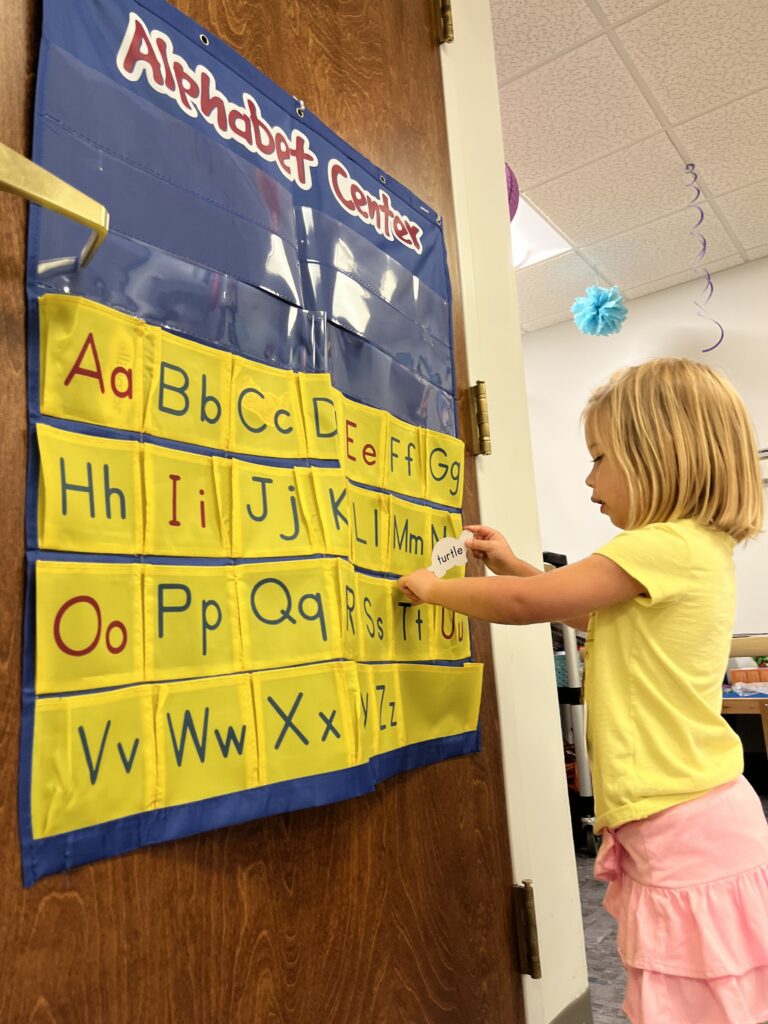

The Role of Play in Cognitive Development
Play is not merely a break from structured learning; it’s a dynamic process that enhances cognitive development. Simple games at home can be a great workout for their brains.
- Memory Match: Create a set of cards with pairs of matching images, letters, or numbers. Shuffle them and lay them face down. Players take turns flipping over two cards at a time, trying to find matches. This game helps improve memory, concentration, and visual recognition skills.
- Scavenger Hunt: Create a list of items for children to find around the house or yard. You can tailor the list to focus on colors, shapes, textures, or categories like things that start with a certain letter. This game promotes problem-solving, observation, and categorization skills.
- Pattern Recognition Games: Use everyday items like colored blocks, buttons, or even fruits to create simple patterns. Start with basic patterns like ABAB or ABCABC and gradually increase complexity. Have children continue the patterns or create their own. This game enhances logical thinking, pattern recognition, and sequencing skills.
In the cognitive symphony of play, children at The Children’s Museum of the Upstate navigate pretend grocery stores, make choices, and solve problems. This isn’t just play; it’s a cognitive workout. Studies have shown that such activities directly influence literacy and mathematics, providing a hands-on approach to complex concepts. The museum’s immersive exhibits act as a cognitive playground, where every interaction becomes a steppingstone toward academic readiness.
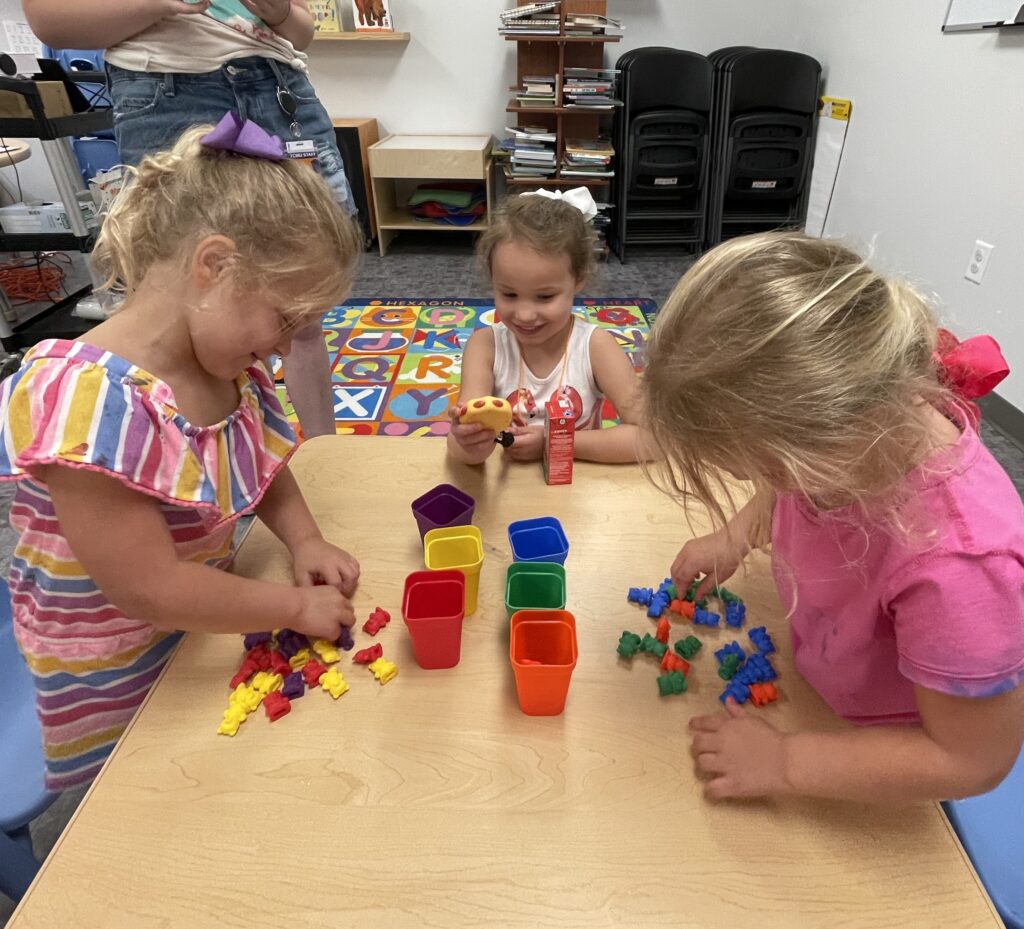

The Role of Play in Social Development
At the heart of play lies the dance of social interactions. From sharing a make-believe restaurant experience to cooperating in a classroom store, children in pre-K are not just playing; they are acquiring foundational social skills. As children advance into kindergarten, play becomes more organized around games with rules that enhance negotiation, problem-solving, and cooperation. Let your child invite a friend over or encourage siblings to try one of these activities.
- Cooperative Board Games: Choose cooperative board games where players work together to achieve a common goal, rather than competing against each other. Through teamwork, children learn to share ideas, listen to others, and work towards a shared objective.
- Team Building Challenges: Set up fun and simple team-building challenges that require cooperation and communication to complete. For example, building a tower out of household materials, solving a puzzle together blindfolded, or navigating an obstacle course. These challenges foster trust, problem-solving skills, and a sense of camaraderie among children as they work together towards a common goal.
- Storytelling Circle: Sit in a circle and start a story with a sentence or two. Each child adds a sentence to continue the story, building upon what the previous person said. This activity encourages listening, turn-taking, and cooperation as children collaborate to create a cohesive narrative together.
The Children’s Museum of the Upstate embraces this social ballet, offering spaces where children learn the art of sharing, taking turns, and waiting – essential skills that pave the way for success in peer interactions and schooling. The structured play programs at the museum create a space where children not only learn academically but also engage in meaningful social interactions, fostering a sense of teamwork and camaraderie.
The Role of Play in Emotional Development
Play is not just a series of activities; it’s a canvas for emotional expression and growth. Stress reduction is a crucial aspect of play, providing children with a joyful outlet for anxiety and stress. But learning to identify emotions in themselves and others is a stepping stone for empathy and self-expression. Games are a great way to build emotional IQ.
- Emotion Charades: Write down various emotions on pieces of paper and place them in a bowl. Children take turns picking a paper and acting out the emotion without speaking, while others guess the emotion. This game helps children recognize and understand different emotions, as well as practice expressing and interpreting nonverbal cues.
- Emotion Bingo: Create bingo cards with different emotions written or depicted in each square. Children take turns spinning a wheel or rolling a dice to determine which emotion to focus on. Then, they share a personal experience or story related to that emotion. This game helps children identify and express their feelings while also promoting empathy and understanding of others’ emotions.
- Emotion Cards Matching Game: Create a set of cards with pictures or drawings depicting different emotions. Shuffle the cards and lay them face down in a grid formation. Players take turns flipping over two cards at a time, trying to find matching pairs of emotions. As they play, encourage children to discuss times when they felt each emotion and how they coped with it. This game promotes emotional recognition, vocabulary development, and self-reflection.
The Children’s Museum of the Upstate recognizes the emotional tapestry woven through play experiences. The museum’s design ensures that playtime is not only about joy but also a therapeutic space where emotional well-being is nurtured.
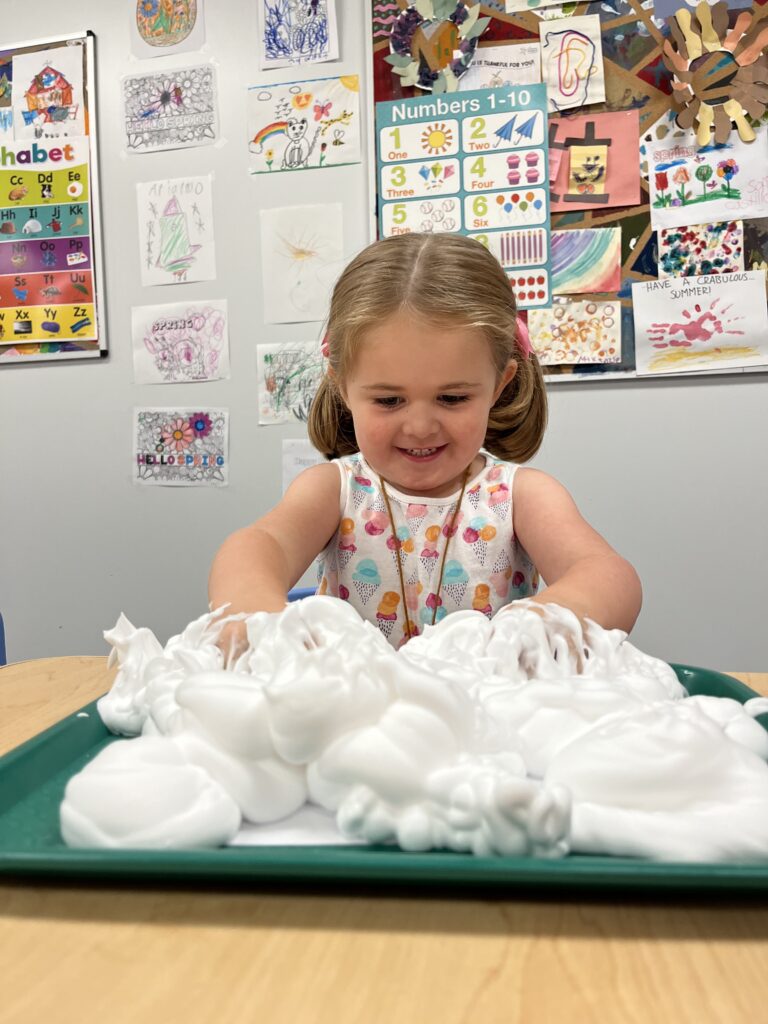

The Continued Learning Journey Through Play
As children progress into the early grades, play continues to be a dynamic force for learning. Elizabeth DeWitt, a senior instructional designer and curriculum specialist at Learning Without Tears in Maryland, emphasizes the importance of connected learning experiences using multisensory strategies, which is demonstrated repeatedly at TCMU. It becomes a space where children actively engage, explore, and use their imaginations, reinforcing the idea that learning and play are inseparable companions.
Multisensory Marvels
The Children’s Museum of the Upstate understands that children learn best through multisensory experiences. Whether it’s seeing, building, singing, or dancing, every sense is engaged to create a holistic learning environment. The museum’s exhibits are crafted to stimulate various senses, ensuring that learning is not confined to a desk but extends into a realm of exploration and discovery.
From Concepts to Creativity
DeWitt emphasizes that children cannot help but remember concepts when the teaching experience involves various activities. The museum incorporates this principle, providing rich learning opportunities where children engage in diverse activities – from building to dramatic play. Concepts are not just learned; they are experienced, ensuring a deep and lasting understanding.
The Role of Parents in Facilitating Play-Based Learning
As every moment becomes a teachable moment, parents play a vital role in facilitating play-based learning at home. According to DeWitt, the best thing parents can do is actively play with their children. This involvement not only contributes to their learning but also builds stronger relationships within the family.
Creating Playful Environments at Home
Rusty Keeler, an advocate for play and an author on the subject, suggests that parents provide open-ended opportunities for play at home. This could include dress-up clothes, building blocks, or outdoor spaces filled with loose materials. The key is to offer children time, space, and freedom to play however they choose.
The Benefits of Outdoor Play
The great outdoors, with its boundless space and natural wonders, becomes a playground for physical activity and exploration. The messy, imaginative backyard advocated by Rusty Keeler isn’t just a chaotic space – it’s an anarchy zone of play, where children can experiment, create, and connect with nature. The Children’s Museum of the Upstate extends this concept, providing outdoor spaces that invite exploration, creativity, and a connection to the natural world.
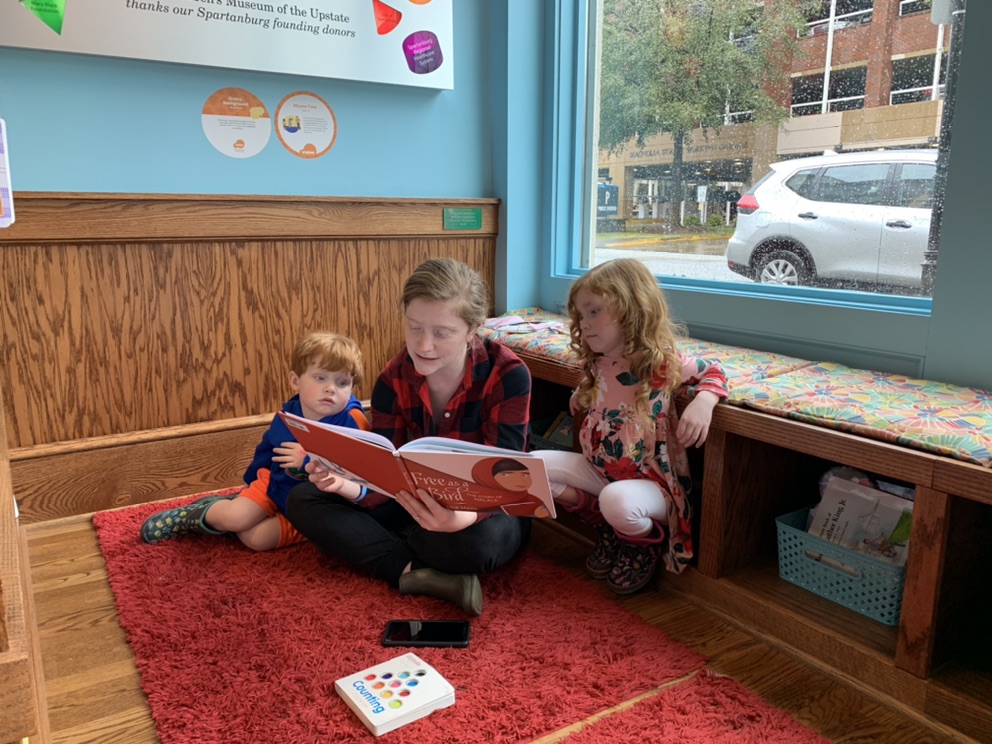

In the enchanting world of learning through play, every giggle, every imaginative scenario, and every shared moment contributes to a child’s growth and development. As parents, you are the architects of this magical journey. Whether you’re actively engaging in play at home or exploring the immersive spaces of The Children’s Museum of the Upstate, you’re creating a foundation for a future filled with curiosity, creativity, and endless possibilities. So, dive into the world of play, be the playful guide your child deserves, and watch as they blossom into confident, curious individuals, ready to conquer the world one playdate at a time!
Dr. Catie Davis, EdD, is Chief Learning Officer- Early Childhood. She is based at TCMU-Spartanburg. Her dissertation is titled: The Power of Play: The Role of Children’s Museums in Kindergarten Readiness.

